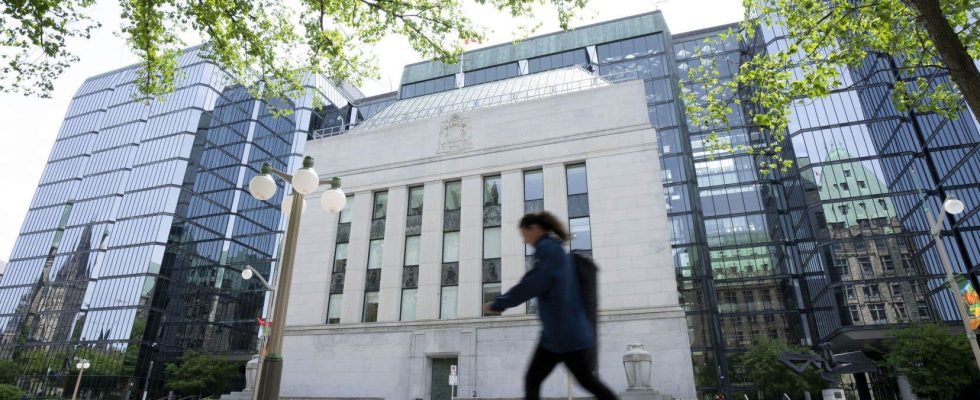The Bank of Canada will keep interest rates unchanged this morning, analysts predict. She could, however, begin to mention the start of their reduction which would possibly come as early as June.
The Canadian central bank is due to announce at 9:45 a.m. where it will place its target for the overnight rate. Its main monetary policy intervention tool has been at 5% since its last increase of a quarter of a percentage point last summer. Faced with what it described as “the greatest global inflationary drift in recent decades”, the Bank of Canada had just raised the cost of money at full speed with the aim of curbing household consumption and business investment, with its key rate still at its pandemic low of 0.25% in March 2022.
Even if many indicators now suggest that this horse medicine has produced results, the Bank of Canada will likely judge that the time for a first reduction in its interest rates has not yet come, many experts believe.
Targeting inflation of 2% which can vary within a range of 1% to 3%, it can only rejoice in the fact that the 12-month variation in the Consumer Price Index (CPI) gradually increased from 8.1% in June 2022 to 2.8% last February. Other measures supposed to better capture core inflation are also falling.
The 12-month change remains a little above target, but the trailing 3-month moving average is well within the range. Moreover, these measures tend to slightly overestimate the problem, some economists have started to point out for some time.
The Governor of the Bank of Canada, Tiff Macklem, and his team will also take into account other factors in their decisions, recalled economists Taylor Schleich and Warren Lovely of the National Bank in a brief analysis Monday. They look in particular at the strength of the economy, the rise in wages, the pricing policies of companies and the expectations of households in terms of inflation.
The Bank of Canada will unveil a new quarterly edition of its Monetary Policy Report where she will update her overall portrait of the economic and financial situation in the country. It will have to correct upwards its own economic growth forecasts for the first three months of the year, because it did not turn out to be as flat as expected.
On the other hand, the unemployment rate has been rising almost continuously for a year due to job creation which is finding it increasingly difficult to keep pace with a rapidly growing population. At 6.1% last month, it was at its highest level since November 2017.
In this context, most analysts predict that the Bank of Canada will, once again, keep its rates unchanged this morning, in order to continue to let them act at the same time as it collects more information on their effects. But as the time for a first rate cut increasingly appears to be for the next monetary policy meeting at the beginning of June, or the next one at the end of July, several of these same analysts are waiting for the central bank to give a signal that this moment is approaching.
As a possible reduction in interest rates would take place very gradually, it “should not generate new inflationary pressures, since rates would still be in restrictive territory at least until 2025”, observed last week Royce Mendes, director general and head of macroeconomic strategy at Desjardins Group.
From 1.75%, just before the COVID-19 pandemic hit, the Bank of Canada’s key rate is not about to return there, if the dozen experts on the Council of Europe are to be believed. monetary policy from the CD Howe Institute. According to one of them, it will still be at 4.25% in a year. According to another, it could be 3%. But for most of them, it should be around 3.5%.
